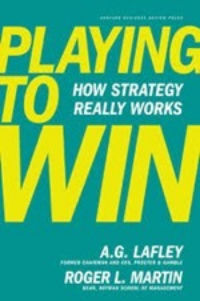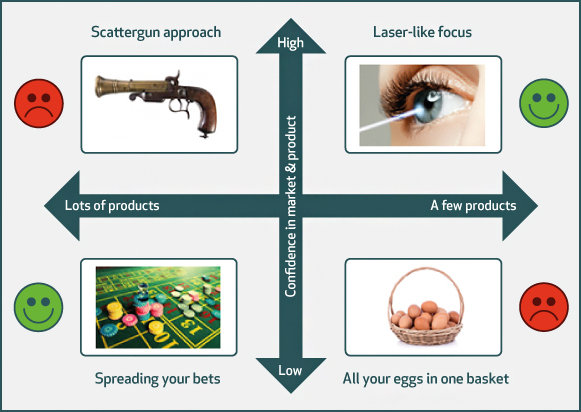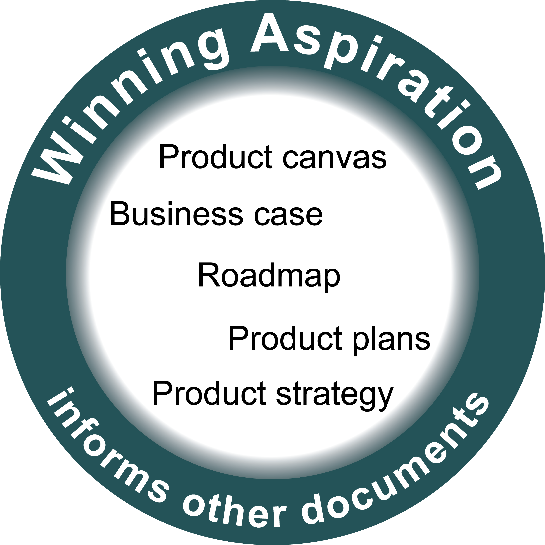
The winning aspiration.
The business strategy book, Playing to Win, has several approaches that can help product managers be successful. Our focus in this blog is on one of these – the need to establish a ‘winning aspiration’.
So, let’s get started – what is a winning aspiration? Let’s look at each word in turn.
What does it mean to ‘win’?
It’s quite simple – are you beating the competition?
To work out if you’re winning, you need to talk about the performance of your product in your market space. Targets for revenue, profit or customer numbers might be important, but they’re not sufficient. To know that you’re winning, you need to measure your performance compared to that of your competition. That means metrics such as market share, superior financial returns, higher customer satisfaction, or something similar. These can be difficult to find out.
Of course, the reality is that most products fail to deliver against their commercial targets. And the book contends that unless you aspire to win, and put in the appropriate effort, the best you’ll ever achieve is mediocrity. You need to aim high.
But, this is not how most product managers behave. For many, getting the product delivered is their target and they dislike setting in-life performance targets against which they may be held accountable. It feels scary. After all, if you don’t tell people what you’re aiming for then you can’t be accused of missing the target!
And, it’s not how companies typically behave.
Many invest significantly in launching a lot of products (spreading their bets) but then under-invest in making the products successful once launched. If, as a product manager, you ask for significant and sustained investment in your product it will probably come at the expense of investment elsewhere. Depending on how much confidence your company has in your product and marketing insight, this will either be considered positively – as a ‘laser-like focus’ on key products or will be considered negatively ‘putting all our eggs in one basket’.
That’s why you hear of General Electric’s requirement for its business divisions. They must be the leader or second in their market. That’s because the leader has the biggest share of profit in a market. And they’re prepared to invest heavily to succeed. If that doesn’t work, they exit the market and focus elsewhere.
And what is meant by an aspiration?
The aspiration is a statement about the future state you want your product to achieve. You might consider this the ‘vision’ for the product – it is an attractive, inspiring guiding statement of what we’re aiming to achieve.
Having a winning aspiration is valuable because it helps keep everyone focused on what’s important. It will help you develop your product canvasses, business cases, roadmap, product plans and strategy. It will help when there’s a need to prioritize and decide how to deal with day-to-day demands for resources and change. And, it helps you stop doing sub-optimal things so you have the resources to focus on the activities that are most likely to deliver a high level of success.
When it comes to defining your winning aspiration, it should focus on the customer and what they care about. So, for a mobile operator, the aspiration would not be to have the biggest mobile network, but it might be to let customers connect from more places and more easily than any other network. In this example, the winning aspiration would help network investment decisions – investment in partnerships for WiFi network and adding low-cost 3G network infrastructure to plug coverage gaps might align better with the winning aspiration than rolling out an ultra-high-speed network.
Without a winning aspiration, it becomes more likely that you’ll simply react to competitor activity rather than taking proactive decisions.
Whilst winning aspirations might be tweaked from time to time, they ought not to change often. They’re being used to influence product investments and the allocation of internal resources. Flip-flopping from one winning aspiration to another will stop you from getting people onside and pulling in a consistent direction.
These are the dos and don’ts for setting your winning aspiration copied from Playing to Win.
- Do play to win rather than simply compete. Define winning in your context. Paint a picture of a brilliant successful future for your product.
- Do craft aspirations that will be meaningful and powerful to your team and to your customers.
- Do start with customers rather than products when thinking about what it means to win.
- Do set winning aspirations for your products. Ask who are your customers and what does it mean to win with them.
- Do think about winning relative to your traditional and best competitors.
- Don’t stop there. Develop the rest of your strategy in support of your winning aspiration.
Read our Journal on Product Strategy to find out more.
Andrew Dickenson
Director, Product Focus




Leave a comment